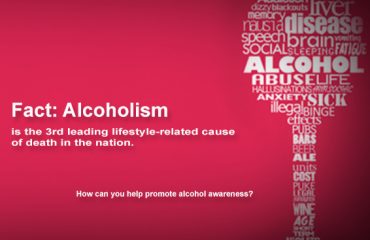July is “UV Safety Month” in the U.S. So what exactly does “UV safety” mean? And what is UV radiation? Ultraviolet radiation (UV) is a form of electromagnetic radiation whose main source on Earth is from the sun. Manmade sources include tanning beds and welding torches. UV rays have more energy than the rays that produce visible light. Scientists have divided UV rays into three ranges: UVA (weakest); UVB (more intense); and UVC (the strongest). UVA and UVB rays are thought to be the ones to cause changes in the skin that may lead to skin cancer. UVC rays react with ozone and never make it to Earth.

Skin. Wonderful skin. Glorious skin.
Without skin, our bodies could not survive in their external environment. Skin is the largest organ in the body; it covers the organs, muscles, and bones and protects them against injury, heat, sunlight, and germs. Skin acts as a barrier to control body temperature, and it helps to synthesize vitamin D. Skin gives us shape and defines our presence and personality. Skin allows us to stretch and move; it holds us together. But skin can also be the source of cancer…
The scope of the problem
Skin cancer is the most common cancer. About 3.3 million Americans are diagnosed each year with some form of skin cancer, with an estimated 76,000 cases in 2016 (and almost 10,000 deaths) from melanoma, the deadliest of the skin cancers. Other types of skin cancer include basal and squamous cell, Kaposi sarcoma, and skin lymphoma.
Skin cancer is a global concern: The Irish Cancer Society lists non-melanoma skin cancer as the most common type of cancer in Ireland, while Cancer Research UK notes that cases of malignant melanoma have increased by 360% since the 1970s. New Zealand, Australia, Slovenia, Norway, and Latvia lead the list of countries with the highest rates (death rate per 100,000 population).
According to the Skin Cancer Foundation, the epidemic of skin cancer affects all countries around the world. In response to the increase in skin cancer globally, the Foundation has sponsored two international conferences and formed an international advisory council.
Skin cancer risk factors
Risk factors for skin cancer include:
- Too much exposure to ultraviolet (UV) radiation (from sunlight or tanning beds and lamps)
- Pale skin (easily sunburned, doesn’t tan much or at all, natural red or blond hair)
- Exposure to large amounts of coal tar, paraffin, arsenic compounds, or certain types of oil
- You or members of your family have had skin cancers
- Multiple or unusual moles
- Severe sunburns in the past
- Weakened immune system
- Older age (although melanomas are also found in younger people)
Skin cancer prevention and early detection
The need to protect your skin from the sun has become very clear over the years, supported by several studies linking overexposure to the sun with skin cancer. The harmful ultraviolet rays from both the sun and indoor tanning “sunlamps” can cause many other complications besides skin cancer, such as eye problems, a weakened immune system, age spots, wrinkles, and leathery skin.
There are simple, everyday steps you can take to safeguard your skin from the harmful effects of UV radiation from the sun.
- Wear proper clothing
- Protect your eyes as well, with a broad-brimmed hat and sunglasses
- Avoid the burn (UV rays are the strongest between 10AM and 4PM)
- Go for the shade
- Use extra caution when near reflective surfaces, like water, snow, and sand
- Use extra caution when at higher altitudes
- Apply broad-spectrum sunscreen 20 minutes before going out
- Re-apply broad-spectrum sunscreen every 2 hours throughout the day
- Pay attention to the UV index
And the latest research reported in this week’s JAMA: Dermatology reminds users of sun screens to check three things:
-
- 1. An SPF ≥30;
-
- 2. A water-resistant product if you’re going into the water; and
- 3. A broad-spectrum product.
They also advise against choosing a sun screen based solely on its fragrance or feel. Some water-resistant products feel sticky, but that’s what keeps them on your skin in the water.
The UV Index
Most TV weather reports now include the UV Index (UVI) scale as part of the daily coverage, especially during the summer months. The UVI provides a daily forecast of the expected risk of overexposure to the sun. The Index predicts UV intensity levels on a scale of 0 to 10+, where 0 indicates a minimal risk of overexposure and 10+ means a very high risk. For example, a recent heat wave in the Southwestern U.S. caused the UV Index to reach 11.
The UVI scale reported in the U.S. conforms to the international guidelines for UVI reporting established by the World Health Organization.
The Environmental Protection Agency (EPA) suggests the use of the “shadow rule”, an easy way to tell how much UV exposure you are getting:
- If your shadow is taller than you are (in the early morning and late afternoon), your UV exposure is likely to be lower.
- If your shadow is shorter than you are (around midday), you are being exposed to higher levels of UV radiation. Seek shade and protect your skin and eyes.
Check your skin regularly
Early detection of skin cancer is the most important and effective way of preventing disability and death. Having a “birthday suit” screening by your health professional is a must for people with long-term exposure to the sun. Using your birthday as a reminder, have ALL your skin surfaces examined for the presence of (or change in) any suspicious lesions.
When you’re looking at “moles” or other “spots” on your skin, the ABCDEs of melanoma skin cancer can be a guide:
A: Asymmetry: one half doesn’t match the appearance of the other half.
B: Border: irregularity: the edges are ragged, notched, or blurred.
C: Color: the color (pigmentation) is not uniform. Shades of tan, brown, and black are present. Dashes of red, white, and blue add to a mottled appearance.
D: Diameter: the size of the mole is greater than 1/4 inch (6 mm), about the size of a pencil eraser. Any growth of a mole should be evaluated.
E: Evolution: there is a change in the size, shape, symptoms (such as itching or tenderness), surface (especially bleeding), or color of a mole.
Quote from a health professional:
Everyone can have a sun-safe summer by using shade, covering up, and wearing sunscreen. Take advantage of shade whenever it’s available—like a porch or a tree. Or bring it with you—like an umbrella or a pop-up canopy. Wear cool and comfortable long-sleeved shirts, wide-brimmed hats, and sunglasses to protect your entire body. Sun-protective clothing doesn’t wash off, rub off, or sweat off—and it keeps working all day long. Sunscreen is ideal for protecting any skin still left exposed. For maximum protection, apply sunscreen before going outdoors, use a generous amount (a shot glass full or more), and reapply it every two hours. As a bonus, summer swimsuits provide an excellent opportunity to take a closer look at your skin—or to have someone else do it. Many skin cancers are discovered by partners or family members. Examine your skin often and ask a healthcare provider to look at anything out of the ordinary.
David Buller, PhD
Senior Scientist and Director of Research, Klein Buendel, Inc.
Other resources:
WHO: scope of the problem
Skin Cancer Foundation’s World Congress on Cancers of the Skin
For teachers from the National Environmental Education Foundation:SunWise
Skin Cancer Foundation
The U.S. Environmental Protection Agency
World Health Organization
The International Alliance Against Cancers of the Skin
——————————————–
Discover more about the human body on our Interactive 3D Human Anatomy & Physiology app.



